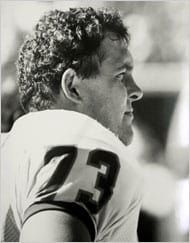Serious San Diego Bicycle Accident Causes Head Injury
Last Thursday, a 67-year-old man was hospitalized for the injuries he suffered when his bicycle crashed in San Diego County’s Linda Vista. He had been attempting to keep his hat on as the wind was blowing it off , according to police.
The scene of the accident was the 1700 block of Ulric Street at about 11:45 a.m. on Wednesday, according to San Diego police Officer Brad Ruff, who reported on the San Diego bike accident. The bicyclist’s injuries included facial fractures, a skull fracture, a broken shoulder, a broken forearm, and a lacerated kidney. He is still expected to survive. Bicycle accidents can be common in San Diego but just as well prevented, by wearing helmets and exercising sound judgment while on the road.
If you or a loved one has ever been injured or killed in a San Diego bicycle accident, contact San Diego, CA bike accident lawyer and the San Diego injury attorneys. You may also contact these San Diego, CA personal injury lawyers.…




